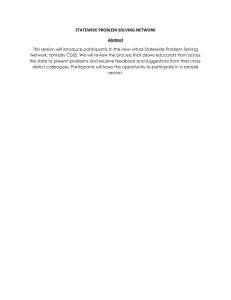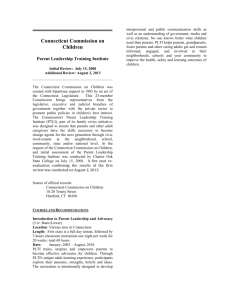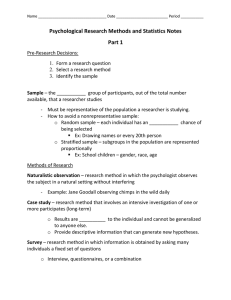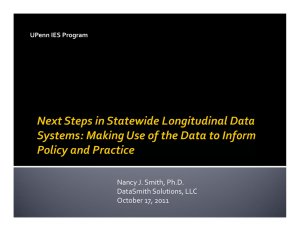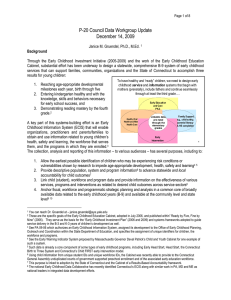Connecticut’s Statewide Longitudinal Data System Grant Fall 2009 – Summer 2012
advertisement
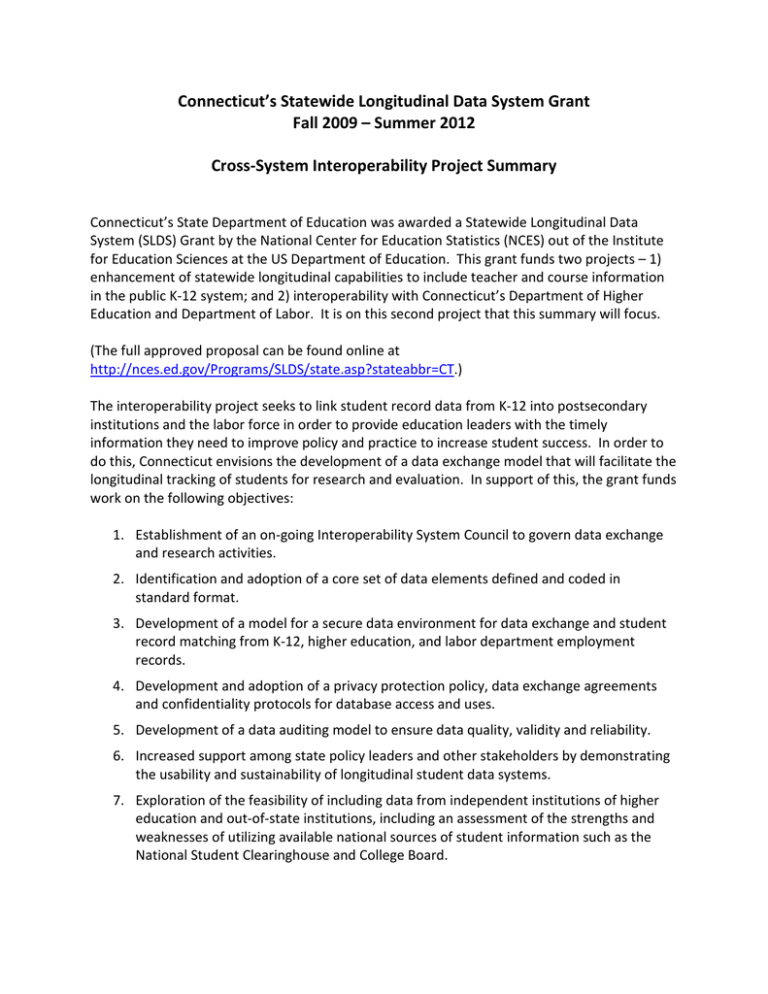
Connecticut’s Statewide Longitudinal Data System Grant Fall 2009 – Summer 2012 Cross-System Interoperability Project Summary Connecticut’s State Department of Education was awarded a Statewide Longitudinal Data System (SLDS) Grant by the National Center for Education Statistics (NCES) out of the Institute for Education Sciences at the US Department of Education. This grant funds two projects – 1) enhancement of statewide longitudinal capabilities to include teacher and course information in the public K-12 system; and 2) interoperability with Connecticut’s Department of Higher Education and Department of Labor. It is on this second project that this summary will focus. (The full approved proposal can be found online at http://nces.ed.gov/Programs/SLDS/state.asp?stateabbr=CT.) The interoperability project seeks to link student record data from K-12 into postsecondary institutions and the labor force in order to provide education leaders with the timely information they need to improve policy and practice to increase student success. In order to do this, Connecticut envisions the development of a data exchange model that will facilitate the longitudinal tracking of students for research and evaluation. In support of this, the grant funds work on the following objectives: 1. Establishment of an on-going Interoperability System Council to govern data exchange and research activities. 2. Identification and adoption of a core set of data elements defined and coded in standard format. 3. Development of a model for a secure data environment for data exchange and student record matching from K-12, higher education, and labor department employment records. 4. Development and adoption of a privacy protection policy, data exchange agreements and confidentiality protocols for database access and uses. 5. Development of a data auditing model to ensure data quality, validity and reliability. 6. Increased support among state policy leaders and other stakeholders by demonstrating the usability and sustainability of longitudinal student data systems. 7. Exploration of the feasibility of including data from independent institutions of higher education and out-of-state institutions, including an assessment of the strengths and weaknesses of utilizing available national sources of student information such as the National Student Clearinghouse and College Board.

